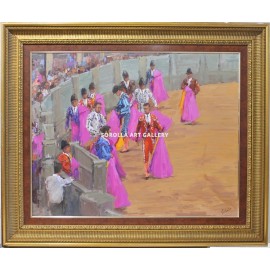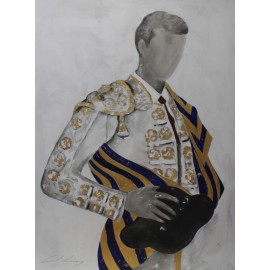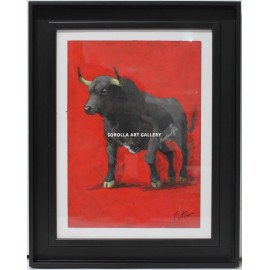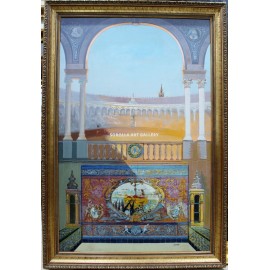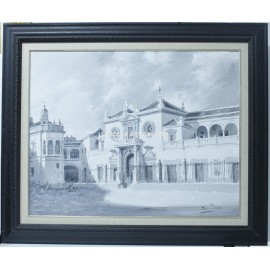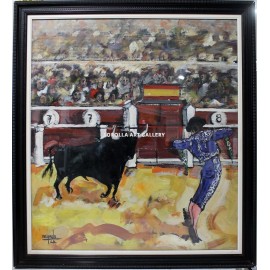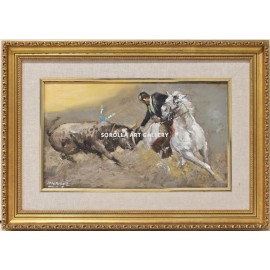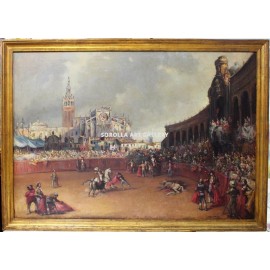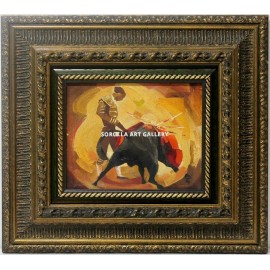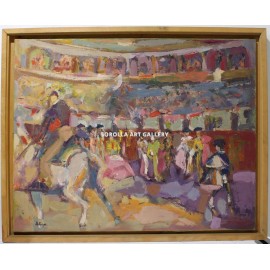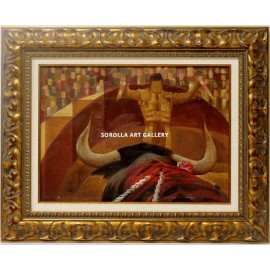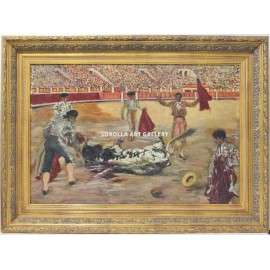Filters
Bullfighting
Walkway
- Measurements (cm): 117x98
- Technique: Oil on canvas
Bullfighter
- Measurements (cm): 120x90
- Technique: Oil on canvas
That bull
- Measurements (cm): 49x39
- Technique: Oil on cardboard
That bull
- Measurements (cm): 50x45
- Technique: Oil on cardboard
Bullfighter
- Measurements (cm): 41x34
- Technique: Oil on wood
Seville and the "Maestranza"
- Measurements (cm): 147x101
- Technique: Oil on canvas
The Maestranza
- Measurements (cm): 116x97
- Technique: Oil on canvas
Bullfighter
- Measurements (cm): 120x90
- Technique: Oil on canvas
Rejoneo
- Measurements (cm): 59x42
- Technique: Oil on canvas
La Maestranza
- Measurements (cm): 142x102
- Technique: Oil on canvas
La Maestranza
- Measurements (cm): 109x90
- Technique: Oil on canvas
That bull
- Measurements (cm): 57x51
- Technique: Oil on cardboard
Bullfighting
- Measurements (cm): 47x42
- Technique: Oil on wood
Banderillas
- Measurements (cm): 61x49
- Technique: Oil on wood
Paseillo
- Measurements (cm): 84x75
- Technique: Oil on canvas
Death of the bull
- Measurements (cm): 91x67
- Technique: Oil on canvas
Sorolla.com is the first Spanish online art gallery to buy paintings, framed pictures, etc. Buy Bullfighting and other styles of paintings.
The image of the bull has alwaysbeen present in artistic manifestations. The oldest known paintings can be found at the grottos and caves of the Upper Paleolithic, such as in the cave of Altamira in Spain.
Later, the cultures of Knossos and Crete, and generally all other cultures surrounding the Mediterranean sea depicted their 'bull games' and their mythology, including the Minotaur, the bulls of Geryon or the labors of Hercules. Thus in mosaics, paintings and sculptures, the bull was widely represented though classical antiquity.
Centuries later, during the Middle Ages, the bull would be present in the illustrations from books which versed about hunting, as those written by Argote de Molina, which included a specific chapter on "Maroon bull hunting in the West Indies." The Cantigas de Santa Maria of Alfonso X the Wise were also illuminated with paintings where the bull appears as an important subject.
It wont be until the eighteenth century, when the bullfighting games acquired their first modern features, that the first pictures where the bull is the protagonist appeared. Painters such as Ramón Bayeu, Luis Paret y Alcázar and Antonio Carnicero created artworks like La diversión de los vecinos de Carabanchel de arriba, Plaza de toros o Chicos jugando al toro , (Bayeu) o Corrida regia en la Plaza Mayor (Luis Paret and Alcázar).
Goya, the most prominent artist of the eighteenth-century, and a great fan of bullfighting, also created a series of artworks dedicated to the world of bullfighting , known as Tauromaquia.
In the nineteenth century the Sevillian school played a very important role in the bullfighting genre with Jose Dominguez Becquer, who would develop the depiction of the bullfighting world in all its facets, always from a folkloric prespective.
At the end of the century, even foreign painters as Edouard Manet were attracted by the Spanish classical painting and the romantic myths about a country that they considered to be exotic, thus creating bullfighting paintings.
In the twentieth century, two internationally renowned painters would devote part of their artistic careers to the bullfighting genre: On one hand, Picasso, for which the bull would be a constant theme in his artwork (including his most famous work, the Guernica) and on the other hand, the Colombian Fernando Botero with his irony and his outrageously fat figures, who depicted bullfighting scenes under the name of La Corrida.



